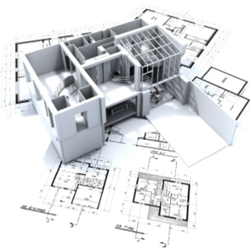
By Michael A. Thomas, FASID, CAPS
President, DAASE
It has been nearly three decades since I completed my first “universally” designed space. It was for a client who wanted to return directly home after the replacement of his right hip and left knee. He refused to even consider moving into a rehab facility. He said that being home with his wife and companion was the best medicine.
The solutions were elementary.
Add a seat bench and a grab bar in the shower. Take away the door to the bedroom and bathroom for greater access for the wheelchair and then later for his walker. Put a ramp along the side of the house so he could enter his home easily rather than face the challenge of the entry steps.
Since the completion of that first project, those “universal design” solutions generally remained the same. But as my Boomer clients aged, I saw the need to grasp the principles of “aging in place” which expanded on the concepts of universal design.
So I was specifying taller toilets to make it easier for clients to get up off the seat. I designed bathrooms and kitchens with two counter heights to accommodate someone in a seated position. And I added more lighting when vision was impaired.
But things have evolved and what I did then doesn’t seem, in certain cases, to make as much sense today. In fact it might be wrong.
President, DAASE
It has been nearly three decades since I completed my first “universally” designed space. It was for a client who wanted to return directly home after the replacement of his right hip and left knee. He refused to even consider moving into a rehab facility. He said that being home with his wife and companion was the best medicine.
The solutions were elementary.
Add a seat bench and a grab bar in the shower. Take away the door to the bedroom and bathroom for greater access for the wheelchair and then later for his walker. Put a ramp along the side of the house so he could enter his home easily rather than face the challenge of the entry steps.
Since the completion of that first project, those “universal design” solutions generally remained the same. But as my Boomer clients aged, I saw the need to grasp the principles of “aging in place” which expanded on the concepts of universal design.
So I was specifying taller toilets to make it easier for clients to get up off the seat. I designed bathrooms and kitchens with two counter heights to accommodate someone in a seated position. And I added more lighting when vision was impaired.
But things have evolved and what I did then doesn’t seem, in certain cases, to make as much sense today. In fact it might be wrong.

Because Boomers continue to deny they actually need such design elements, a change in words is called for. The “grab” bar gives a negative impression like one in a gas station bathroom. Calling it a “balance” bar reflects what it really is used for. Avoid calling an accessible shower with a curb-less entry a “roll-in.” A contractor I know refers to it as a European entry, a preferable and much more “elegant” phrase.
Through the years, I have been an advocate for eliminating stairs and steps in one’s home. However I have begun to reconsider that recommendation and others such as the taller toilet. Recently I had the opportunity to work with clients who are kinesiologists. They believe that an important key to accessibility and a longer lifespan is to keep the body active. If you make it too easy to live at home, then one is not using nor stretching the body to keep fit. One of their suggestions to “aging in place” includes the daily, routine and ongoing activity of climbing stairs or steps.
And finally, one has to question whether “aging in place” is even the right phrase to use now with an ever-growing number of Boomers remaining in denial, living longer and healthier lives. When a number of passionate colleagues including myself founded the Design Alliance For Accessible Sustainable Environments(DAASE), there was a struggle to how best embrace a larger and diverse demographic. And when we brain-stormed ideas to use words that didn’t include “age,” it didn’t take us to long to realize that designing a home, a place that supports one’s independence no matter age or ability, was really about “staying in place.”
For me and for the members of DAASE, “staying in place” is about getting it right. It is about creating a home, a workplace and even a community that supports and accommodates the daily living activities of the largest number of people.
For more information, visit www.stayinplace.org or on FaceBook at https://www.facebook.com/StayInPlace
Michael A. Thomas continues to be amazed at the impact design makes on the human experience. Working from his studio in Palm Springs, CA, his design work incorporates universal design and sustainable concepts into each project. He is the co-author of “Residential Design For Aging In Place,” the definitive guide to creating homes for a lifetime. Michael is a past National President of ASID, a “Fellow” of ASID, a Certified Aging In Place Specialist (CAPS) and recently elected to serve as the President of the Design Alliance for Accessible Sustainable Environments( DAASE).
Through the years, I have been an advocate for eliminating stairs and steps in one’s home. However I have begun to reconsider that recommendation and others such as the taller toilet. Recently I had the opportunity to work with clients who are kinesiologists. They believe that an important key to accessibility and a longer lifespan is to keep the body active. If you make it too easy to live at home, then one is not using nor stretching the body to keep fit. One of their suggestions to “aging in place” includes the daily, routine and ongoing activity of climbing stairs or steps.
And finally, one has to question whether “aging in place” is even the right phrase to use now with an ever-growing number of Boomers remaining in denial, living longer and healthier lives. When a number of passionate colleagues including myself founded the Design Alliance For Accessible Sustainable Environments(DAASE), there was a struggle to how best embrace a larger and diverse demographic. And when we brain-stormed ideas to use words that didn’t include “age,” it didn’t take us to long to realize that designing a home, a place that supports one’s independence no matter age or ability, was really about “staying in place.”
For me and for the members of DAASE, “staying in place” is about getting it right. It is about creating a home, a workplace and even a community that supports and accommodates the daily living activities of the largest number of people.
For more information, visit www.stayinplace.org or on FaceBook at https://www.facebook.com/StayInPlace
Michael A. Thomas continues to be amazed at the impact design makes on the human experience. Working from his studio in Palm Springs, CA, his design work incorporates universal design and sustainable concepts into each project. He is the co-author of “Residential Design For Aging In Place,” the definitive guide to creating homes for a lifetime. Michael is a past National President of ASID, a “Fellow” of ASID, a Certified Aging In Place Specialist (CAPS) and recently elected to serve as the President of the Design Alliance for Accessible Sustainable Environments( DAASE).

 RSS Feed
RSS Feed